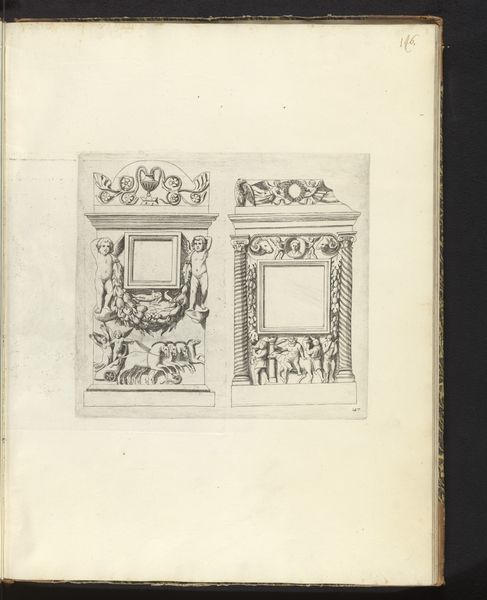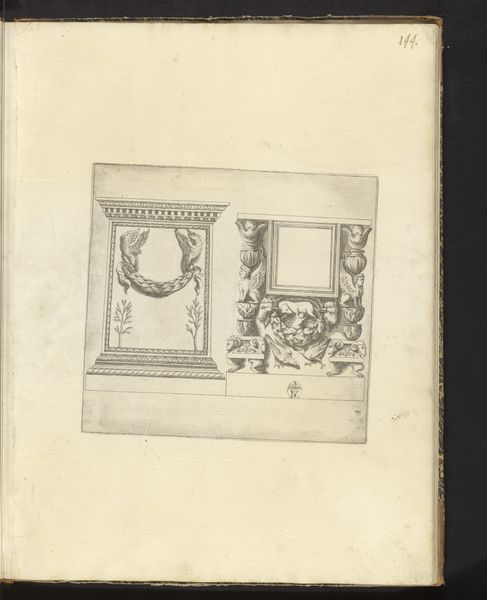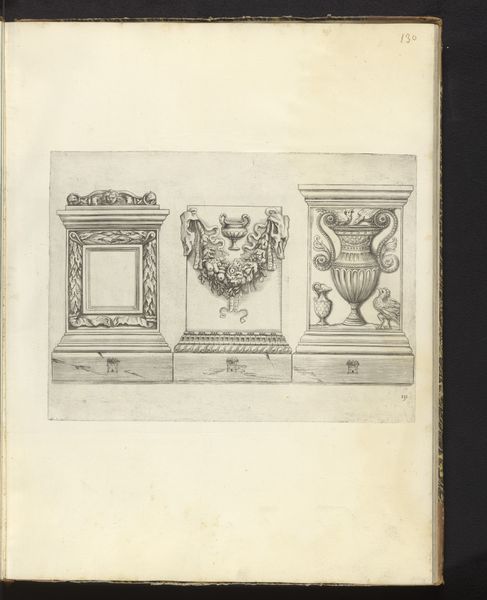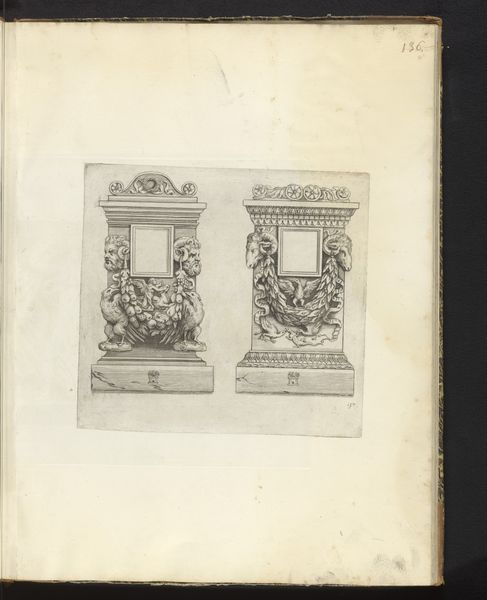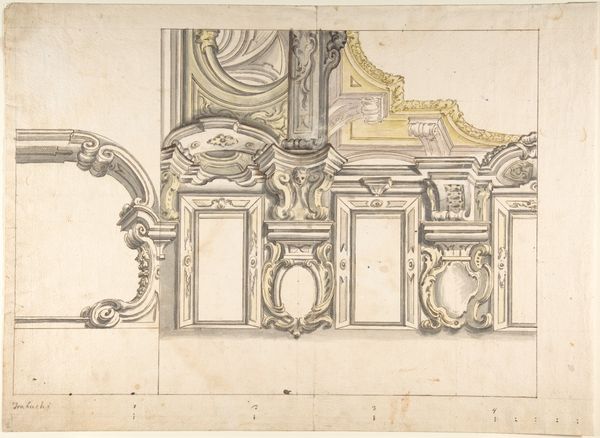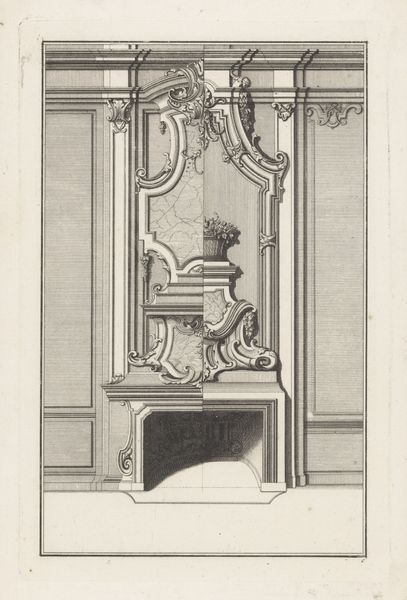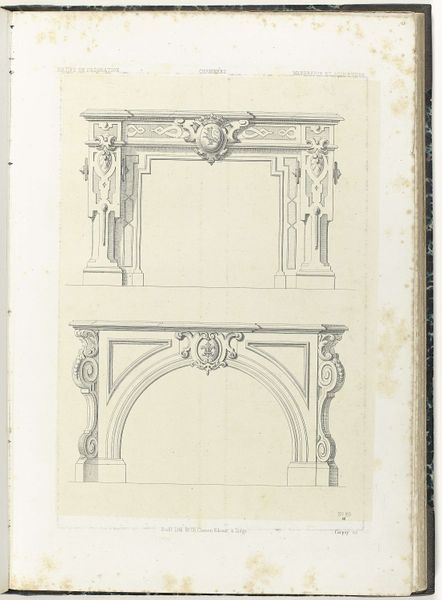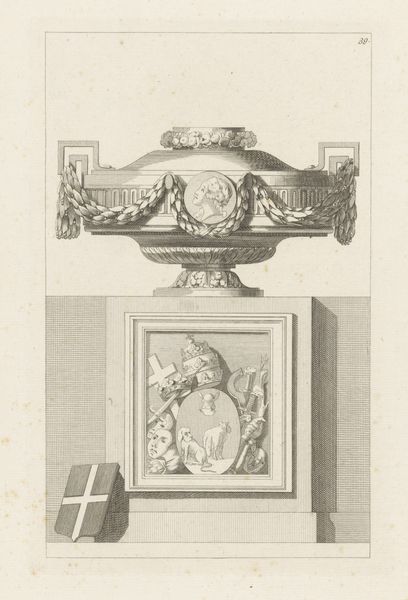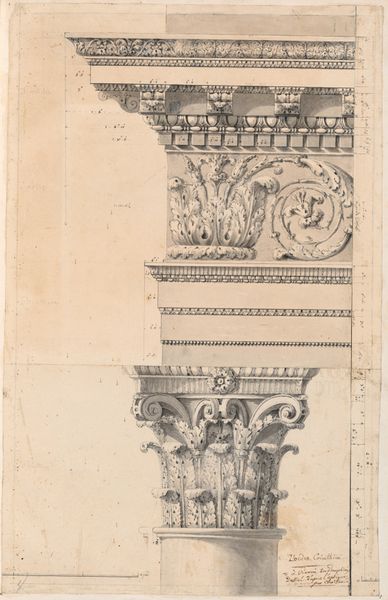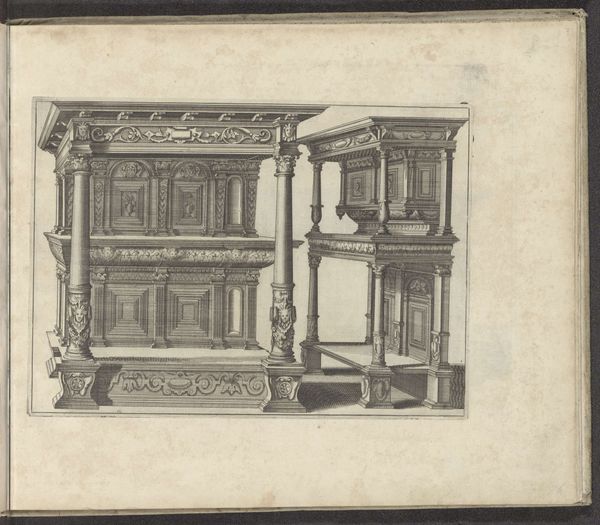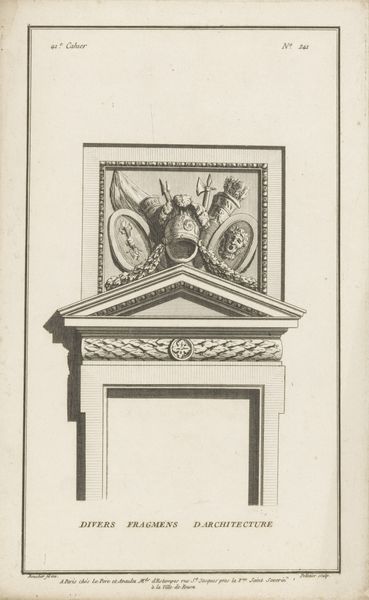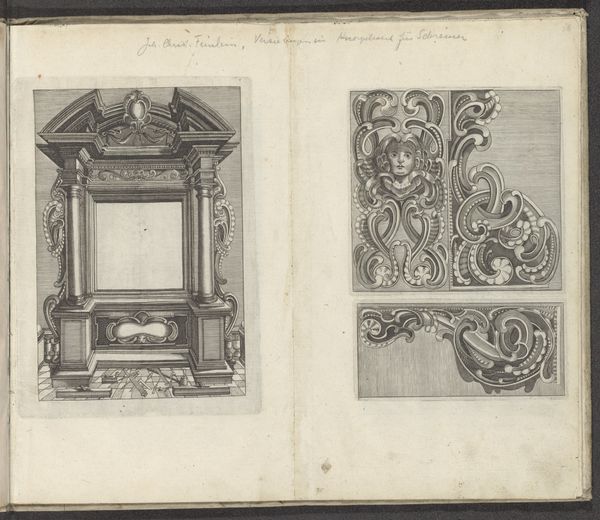
drawing, print, paper, ink, engraving, architecture
#
drawing
#
aged paper
#
toned paper
#
baroque
# print
#
old engraving style
#
sketch book
#
classical-realism
#
paper
#
form
#
personal sketchbook
#
ink
#
pen-ink sketch
#
pen and pencil
#
pen work
#
sketchbook drawing
#
sketchbook art
#
engraving
#
architecture
Dimensions: height 233 mm, width 353 mm
Copyright: Rijks Museum: Open Domain
Reinier van Persijn created this image of three pedestals using pen in the Netherlands during the 17th century. These aren't just architectural renderings; they are statements about power and status. Pedestals serve as platforms elevating the object placed on top of it to a higher level of attention, so this drawing presents the viewer with various options on how to elevate an object and how that elevation could speak to the cultural values of the time. The image's classical motifs, like the ram's head and laurel wreaths, reference ancient Greece and Rome, evoking authority and tradition. Van Persijn's drawing catered to a society deeply invested in displaying its wealth and lineage. Understanding this artwork involves delving into the visual culture of the Dutch Golden Age. By studying architectural pattern books, emblem books, and period accounts, we can begin to understand the symbolic language embedded within these pedestals.
Comments
No comments
Be the first to comment and join the conversation on the ultimate creative platform.
